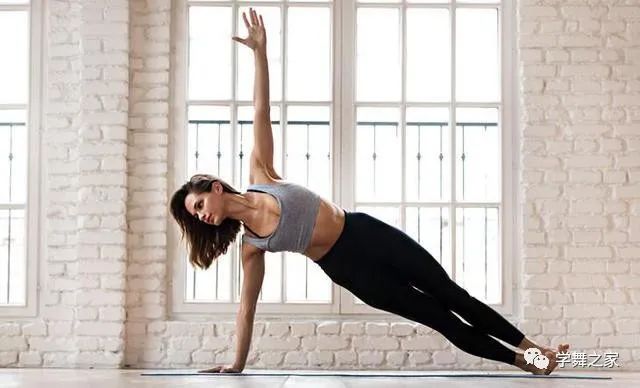Although handstand practice can calm the mind and strengthen the core, completing handstand is also a very difficult challenge! It requires your patience, body core, spine and shoulder strength, balance and focus.

When practicing, you can use the following skills to reduce the pressure in practice and help you complete a stable handstand.

Building your core is not only your abdominal strength, but also adding postures such as “riding a bicycle” in each exercise will be very helpful! Try the fully extended mountain pose.

This is exactly how you should combine your body with handstand: starting in mountain pose, practice leaning your ankles together and then tightening your thighs together.

Next, pull your abdomen toward your spine, keeping your ribs and hips slightly forward.

Open your shoulder blades, extend your arms over your head, and squeeze your palms.

Distribute the weight evenly on your feet and try to balance 5 breaths there.

You can practice this movement in all postures, especially “side plank”, “plank”, “Eagle”, “tree” and “magic chair”.

Spine orthostatic exercise board: having a strong core is very important for the stability of headstand.

If you can, you can keep 10 breaths in the plank, and you can enter the low plank or four column support, so that your shoulders will remain in good condition.

In particular, forearm handstand, you also need to practice forearm plank.

Try placing the elbow clasp so that the elbow is under the shoulder.
Pulling the elbow to the center line in this way is critical to maintaining the stability of the final headstand.
The plank also helps increase core strength and position your spine during headstands.
If your spine is out of alignment in headstand and your core is not activated, your neck will tilt back, which means your lower back is not supported and prone to injury, so your strength will be greatly reduced.
To prevent this, just carefully align in the plate and increase the force in the process.
If you feel uncomfortable with any changes in the plate, or if you find your hips sagging to the ground, pull your abdomen toward your spine.
If you still can’t solve the problem, please let your knees touch the ground to protect your back.
Sagging means you need more core strength to maintain posture and maintain the strength of your shoulders and upper back.
Make sure the wrist is below the shoulder in the plank and the elbow is above the wrist in the four column support.
Rotate the triceps to keep the upper arm activated.
Dynamic Dolphin: you should practice dolphin to prepare for any type of handstand.
Dolphin can strengthen your shoulders, so practice dynamic dolphin as much as possible: keep breathing 3 times in dolphin, squeeze your elbows towards each other, and then pull your shoulders away from your ears.
Then lift one leg and spread your toes to activate all your leg muscles.
Next, shake the toes of your standing feet three times and lift them up each time you inhale.
Repeat twice on each side.
This action helps your body learn how to stack your hips over your shoulders.
It also accustoms your shoulders to the weight.
Try putting a yoga brick under your feet to improve the position of your hips, so as to improve the levelness of your hips.
Overcoming fear the fear of handstand comes from: the fear of the unknown and the fear of falling.
Practice inverted asana as much as possible.
For example, “downward dog pose”, “shoulder handstand”, “wheel pose” and even “forward elbow curl pose”.
The fear of falling is real and can be overcome by your own strength and flexibility.
Many of us start by raising our legs.
This can actually lead to overpowering and overturning and fear.
There are four ways to solve this problem: 1 Lean against the wall when jumping up: when you know where the balance point is, step away from the wall.
2.
practice wheel pose and forearm wheel pose: to reduce the fear of falling backward.
3.
practice knee bending: This handstand can help you find the balance of your torso.
Once you’re sure you won’t fall back, slowly bring your legs together.
4.
deepen your forward folding: the more flexible your forward folding action is, the less time it takes to jump your legs off the ground, and the greater your control when you need to lift your legs into handstand.
The safer you are, the more courageous you will be and the easier it will be to get into position…

